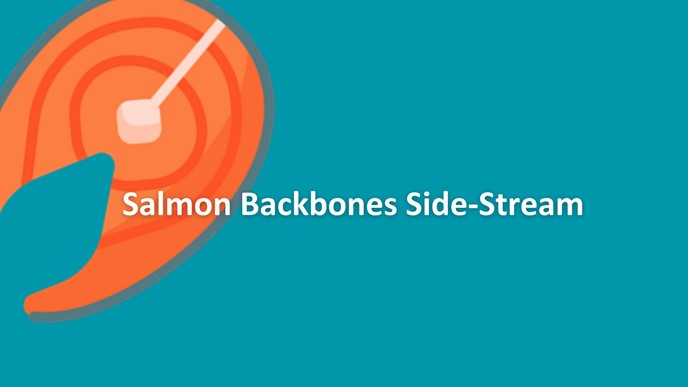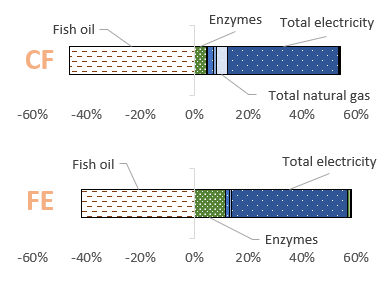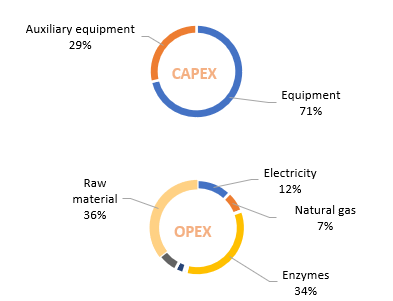Enzymatic Hydrolysis Technology: Salmon Backbones Side-Stream
Overview of the Environmental and Economic Sustainability Assessment

The growing demand for the fishing industry has caused a significant rise in the volume of side streams. Side streams are often treated as waste, leading to both environmental consequences and economic losses. Disposal of solid waste presents a major environmental problem, as it can lead to pollution and other negative effects on ecosystems. Nevertheless, there is a promising alternative: valorising side streams. This valorisation can not only reduce environmental impacts but also lead to economically valuable products.
The WaSeaBi project, an EU-funded Horizon 2020 initiative (grant agreement no. 837726), plays a significant role in advancing novel technologies in this regard. One of the value chains analysed within the project's scope is the salmon backbones side stream. Extensive research has been conducted on the processing of salmon backbones using enzymatic hydrolysis technology to obtain valuable flavoring agents. This novel process has been tested and implemented at the Barna pilot plant in Bilbao, Spain. The technology presented a positive credit for the fish oil produced as by-products. To ensure that the implementation of this technology does not result in adverse environmental or economic consequences, a comprehensive sustainability analysis was conducted throughout the project's development and operational phases, using Life Cycle Assessment (LCA) and Life Cycle Costing (LCC) methodologies.
Life Cycle Assessment
For both the carbon footprint (CF) and freshwater eutrophication (FE) impact categories, electricity consumption is the main driver. Therefore, adopting energy saving practices and a transition to renewable energy sources can significantly reduce these environmental impacts in the future. Electricity consumption is followed by the use of enzymes due to their energy-intensive production processes.
 '
'
LCA results highlight that fish oil generation during the process has a positive impact that reduces environmental burden in both impact categories. Notably, the impact of fish oil by-product is equal to the contribution of total electricity consumption in the FE impact category. This situation demonstrating that by-products from production processes offer significant potential for reducing environmental burdens.
Salmon icon created by Freepik - Flaticon
Life Cycle Costing
The analysis revealed that the generation of fish oil has a significant impact on the evolution of costs and revenues. It holds significant importance for economic feasibility that fish oil products obtained through this technology can be directly reused or sold in the market without requiring additional processing. The analysis also shows that the most substantial capital expense (CAPEX) is associated with equipment expenses. Also, raw material and enzymes constitute a noteworthy portion of the operational expenses (OPEX).

- Functional Unit: 1 kg of flavouring agents.
- System Boundaries: Cradle-to-Gate.
- Method: Environmental Footprint (EF) 3.1.
For more details on this value chain, watch this video.